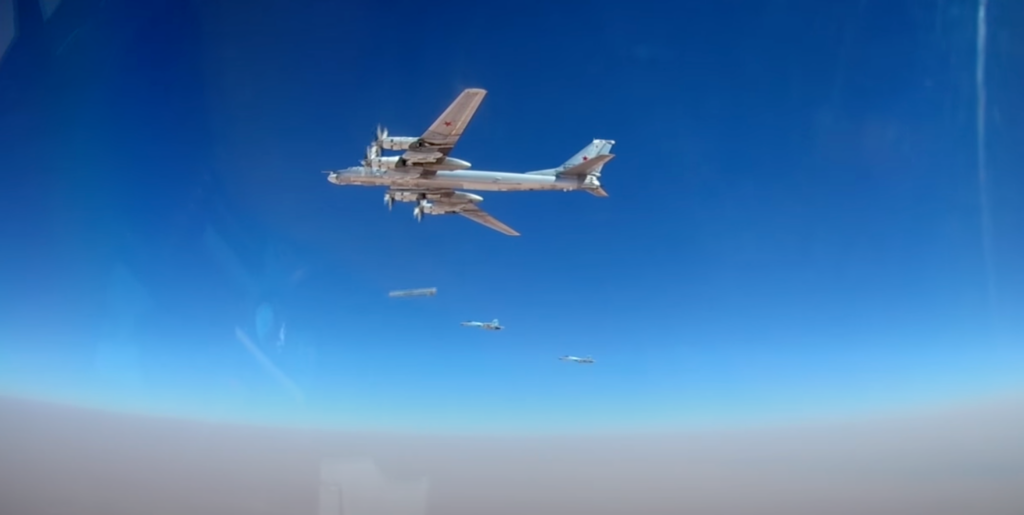- Some Russian missiles may be malfunctioning and missing their targets, per British intelligence.
- The AS23a Kodiak — or Kh-101 — is one of Russia's top precision-guided munitions.
- "Issues in its production" could lead to rushed production jobs, the UK MOD says.
Premium Russian cruise missiles might be malfunctioning and missing their targets, according to new intelligence from the UK Ministry of Defence.
The UK MOD said on Tuesday that it analyzed open-source images taken on March 31, 2024, which showed missile wreckage in a field in Saratov Oblast, southern Russia.
The UK MOD said the debris was initially considered remnants of a "possible Ukrainian uncrewed aerial vehicle." However, their analysis concluded that the pieces were likely "fragments of a Russian AS-23a KODIAK air-launched cruise missile."
"It is highly likely the debris was the result of a malfunction of a KODIAK missile that was launched towards Ukraine earlier that morning," the UK MOD said.
"The highly likely malfunction of such a prestigious missile indicates issues in its production, likely impacted by sanctions and being rushed to meet the demands of the conflict," the department added.
The AS23a Kodiak is one of Russia's top precision-guided munitions and was designed to attack major military targets like airfields and warships. Also known as the Kh-101, it carries a 992-pound payload that can be equipped with high explosive or fragmentation warheads, per the Center for Strategic and International Studies.
Russia has been using these missiles not just to hit military targets but also to take out Ukraine's grain silos and "hurt global food markets," UK intelligence said in October.
Russia's blockade of Black Sea ports has also destabilized Ukraine's food production and sent food prices soaring worldwide, even in places like Kenya and Egypt, which relied heavily on Ukrainian and Russian wheat imports.
While Russia is still losing hundreds of troops a month, Ukraine is struggling to prevent further Russian frontline advances. It has suffered blows from the huge barrage of missiles Russia unleashed on it this winter.
In March, Russia also pounded Ukraine with glide bombs, a tactic that Ukraine can only counter by taking out the planes that drop them. Ukrainian Minister of Foreign Affairs Dmytro Kuleba said at a March 27 briefing that Russia dropped around 700 glide bombs on Ukraine within six days, bombarding targets consistently from March 18 to 24.
With US aid still stalled out in Congress, Ukrainian President Volodymyr Zelenskyy is now begging for more Patriot air-defense systems to defend cities like Kharkiv from Russian missile and bomb attacks. Ukraine is also looking to build drones that could hunt down Russian unmanned aerial vehicles instead of burning through their stockpiles of surface-to-air missiles to prevent aerial harassment.
Representatives for the Russian and Ukrainian defense departments did not immediately respond to requests for comment from Business Insider.
